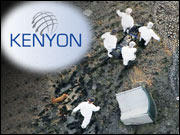Death Stalked the Hospitals

By Sewell Chan and Gardiner Harris
The New York Times
Wednesday 14 September 2005
Baton Rouge, Louisiana - Confusion and desperation permeated the New Orleans hospital system as floodwaters rose, emergency generators failed and dozens of patients died in the three chaotic days after the levees broke, according to doctors and other witnesses.
While all of the city's major hospitals had detailed evacuation and emergency plans, officials said, none was prepared for a catastrophic flood. And each responded differently when disaster struck.
At Memorial Medical Center, where 45 bodies were discovered this week, staff members said they could do little more than try to comfort dying patients.
Frightened and exhausted nurses and doctors squeezed hand-held ventilators for patients who could not breathe. The cook reduced the daily meal ration from three to two to one. Doctors prioritized patients for evacuation by helicopter, writing a number on a sheet of paper and taping it to each patient, with three for the sickest and one for the least critical.
Charity and University, two public hospitals that are part of the Louisiana State University system, did not have the money to hire helicopter companies to evacuate patients, said Don Smithburg, the system's chief executive. As a result, they were among the last to be evacuated.
The two hospitals relied almost entirely on the military and federal authorities.
Charity and University managed to evacuate their 28 babies - 18 of them in intensive care - only by early Friday morning, Sept. 2, nearly two days after the other hospitals. Twenty bodies were left behind at the two hospitals; 12 of the patients had died before the storm.
At Memorial, a private 317-bed hospital opened in 1926, "there were patients who were lying on the floor," said Dr. John Walsh Jr., a surgeon who stayed until the early hours of Sept. 2, when helicopters finally evacuated the last patients.
"The nurses were basically standing, and giving them food or water," he said. "There were some medications we could give, but nothing like modern medicine. We were back to the 1800s.">>>continued
Link Here




0 Comments:
Post a Comment
<< Home